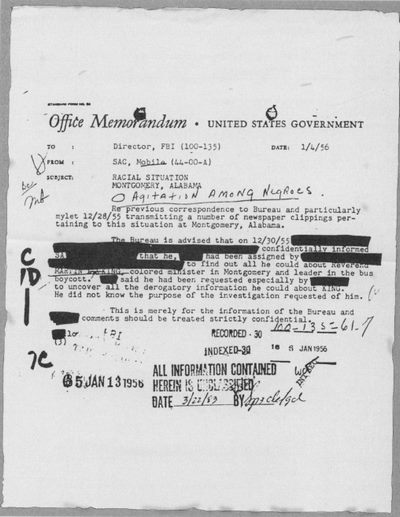
Here's an analysis of the question, breaking it down step by step to arrive at a comprehensive answer. The question asks about the evolution of domestic counterinsurgency tactics, specifically in relation to the FBI's COINTELPRO program and its modern-day parallels.
First, I need to define COINTELPRO and its goals. Then, I will identify the tactics used. Next, I will look for modern-day examples of similar tactics. Finally, I will compare and contrast the historical and contemporary approaches, highlighting the continuities and changes.
According to www.iAsk.Ai - Ask AI:
COINTELPRO, a series of covert operations conducted by the FBI between 1956 and 1971, aimed to surveil, infiltrate, discredit, and disrupt American political organizations the FBI deemed subversive.[1] The program targeted various groups, including civil rights organizations, anti-war activists, and Black power movements.[1] The FBI's motivation was to "protect national security, preventing violence, and maintaining the existing social and political order".[1] Tactics included psychological warfare, spreading misinformation, harassment, and illegal violence.[1]
The evolution of domestic counterinsurgency in the U.S. reveals a continuity of structure and intent, adapting to new legal regimes, digital technologies, and ideological terrains, with the FBI's COINTELPRO program serving as a historical precedent.
COINTELPRO's primary tactics included infiltration, psychological warfare, harassment via the legal system, illegal force, and undermining public opinion.[1] Infiltration involved agents and informers discrediting, disrupting, and redirecting actions of targeted groups.[1] Psychological warfare employed tactics like planting false media stories, forging correspondence, and spreading misinformation.[1] Harassment involved abusing the legal system to harass dissidents.[1] Illegal force included conspiring with local police to threaten, conduct illegal break-ins, and commit violence.[1] Undermining public opinion involved challenging the reputations of organizations and denying them platforms.[1]
Modern examples of similar tactics can be seen in the "Alphabet Boys" podcast, which documents the FBI's infiltration of racial justice protests after the police killing of George Floyd in 2020.[2] The FBI paid an informant to infiltrate and spy on activist groups, encouraging them to purchase guns and commit violence.[2] This echoes COINTELPRO's tactics of using informants to disrupt and discredit movements.[2] The podcast highlights how the informant, Mickey Windecker, became a leader in the protest movement and then attempted to entrap activists in crimes, mirroring COINTELPRO's "snitch-jacketing" tactic.[2]
Project Esther, launched by the Heritage Foundation in October 2024, frames pro-Palestinian advocacy as "terrorism" and seeks to dismantle the broader left by branding critics of Zionism as threats to national security.[3] This initiative relies on digital monitoring, facial recognition, AI-assisted data mining, and social media scraping to map associations between individuals, organizations, and actions.[3] It aims to sow distrust among organizations, isolate so-called "radicals," and generate internal divisions, drawing directly from counterinsurgency manuals.[3]
The key difference between COINTELPRO and modern counterinsurgency lies in the actors and methods. While COINTELPRO relied on federal secrecy and classified directives, today's repression develops through public-private coordination, open-source surveillance, and layers of plausible deniability.[3] The outcome is a more privatized, legally ambiguous, and digitally mediated mode of disruption that launders the violence of the state through university codes, NGO reports, and data-mining activism.[3] The use of social media platforms as tools of censorship and surveillance, as seen with the removal of pro-Palestinian content, is a modern example of this evolution.[3]
Authoritative Sources
- COINTELPRO. [Wikipedia]↩
- FBI Abuse of Power Alleged in Denver BLM Protests. [The Guardian]↩
- From COINTELPRO to Project Esther: The Evolution of Domestic Counterinsurgency in the U.S. [Mondoweiss]↩


Answer Provided by iAsk.ai – Ask AI.
Sign up for free to save this answer and access it later
Sign up →